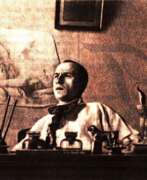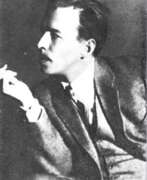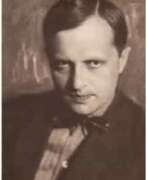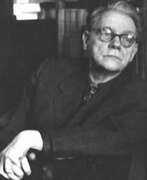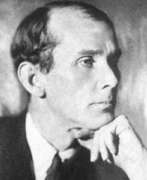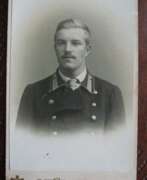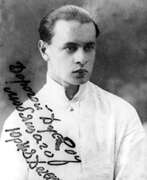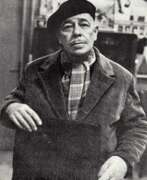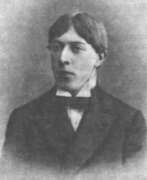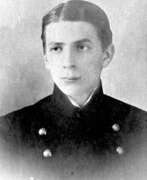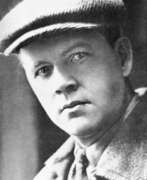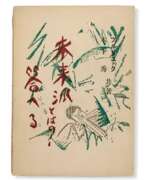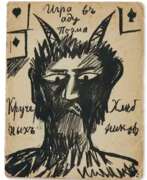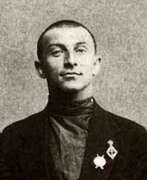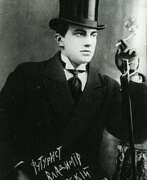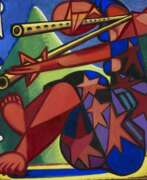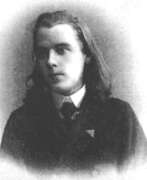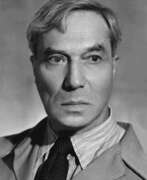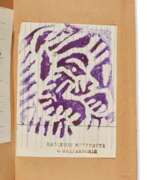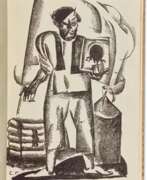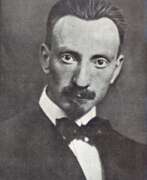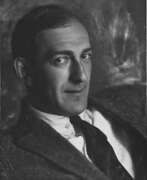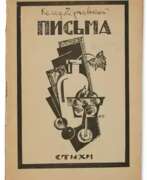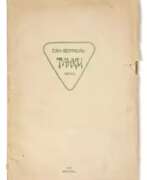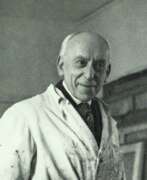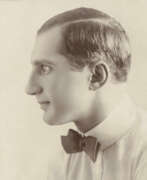Poets Futurism
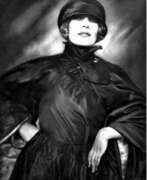

Kseniya Leonidovna Boguslavskaya (Russian: Ксения Леонидовна Богуславская) was a twentieth-century Russian artist who lived and worked in Germany and France for most of her career. She is known as a painter, graphic artist, theatrical artist and designer, and poetess.
Kseniya Boguslavskaya was a representative of the avant-garde school. She created semi-abstract cubo-futuristic compositions, including landscapes, still lifes, genre scenes, and images of interiors. In the same style, the artist drew sketches for articles of applied art. She also illustrated covers of publications and worked as a scenographer.
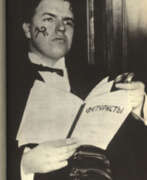

David Davidovich Burliuk (Russian: Давид Давидович Бурлюк), a pioneering figure of the Russian Futurist movement, was a Ukrainian poet, artist, and publicist, born in 1882 in Semirotovshchina, Kharkov, Ukraine, and died in 1967 on Long Island, N.Y., U.S. Known for his eclectic contributions that spanned poetry, painting, criticism, and publishing, Burliuk's work was instrumental in introducing the Russian avant-garde to Europe and the United States. Despite having a lesser volume of work in poetry and painting compared to his contemporaries, Burliuk's knack for discovering talent and promoting it was unparalleled. He was among the first to publish the works of Velimir Khlebnikov and to recognize the genius of Vladimir Mayakovsky, significantly contributing to their renown.
Burliuk's artistic journey was marked by his involvement with the Futurist and Neo-Primitivist movements. His early work, including an exhibition with the group Zveno ("The Link") in Kiev in 1908 and his participation in the Hylaea group, set the stage for his later achievements. He was a co-author of the influential Futurist manifesto "A Slap in the Face of Public Taste" in 1912, advocating for a break from traditional art forms and the embrace of modernity. Burliuk's commitment to Futurism was evident in his publishing endeavors and his collaborations with notable artists of the time.
In his later years, after emigrating to the United States in 1922, Burliuk continued to engage with the art world, contributing to pro-Soviet groups and publishing his works and those of his contemporaries. His efforts were recognized in several exhibitions, including a significant show at the Brooklyn Museum's 1926 International Exhibition of Modern Art. Despite facing challenges, such as being denied permission to visit his homeland by the Soviet government, Burliuk's influence remained steadfast. His legacy as a central figure in Russian Futurism and his contributions to the broader art movement are celebrated to this day.
To stay informed about updates and events related to David Davidovich Burliuk, including sales of his works and auction events, sign up for our newsletter. This subscription will ensure you're the first to know about new discoveries and opportunities to engage with Burliuk's enduring legacy.
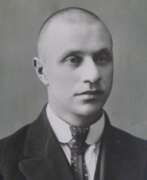

Vladimir Davydovych Burliuk (Russian: Владимир Давидович Бурлюк) was a Ukrainian avant-garde artist, known for his contributions as a Neo-Primitivist and Cubo-Futurist. Born on March 27, 1886, in the Russian Empire, Burliuk's work spanned various mediums, including painting and book illustration. His art is celebrated for its bold experimentation and pioneering spirit in the early 20th century avant-garde movement. Burliuk's life was tragically cut short when he died at the age of 32 during World War I in 1917.
Burliuk's artistic output is characterized by its innovative approach and his involvement in the avant-garde circles that radically transformed Russian art. His works were part of significant avant-garde exhibitions and movements, showcasing his commitment to pushing the boundaries of traditional art. Among his notable works are contributions to publications and exhibitions that captured the essence of the avant-garde, such as "Sadok Sudei (A Trap for Judges)" in 1910 and "Moloko kobylits (Milk of Mares)" in 1914. His art is recognized for its unique body of works, blending Cubism, Rayonism, and elements of Futurism, marked by stylistic unity and high valuation by connoisseurs.
Burliuk's legacy extends beyond his own creations; his involvement with key figures and movements of the time, including his brother David Burliuk, further emphasizes his role in shaping modern art. Despite his early death, Vladimir Burliuk's work remains a testament to the vibrancy and dynamism of the avant-garde movement, with his pieces held in high regard by collectors and experts alike.
For those interested in exploring the depths of avant-garde art, Burliuk's oeuvre offers a fascinating glimpse into the revolutionary spirit of early 20th-century artistic exploration. His contributions continue to inspire and intrigue art lovers, underscoring the lasting impact of his brief but impactful career.
Sign up for updates to stay informed about new product sales and auction events related to Vladimir Davydovych Burliuk, and immerse yourself in the world of avant-garde artistry that continues to resonate with collectors and art enthusiasts alike.
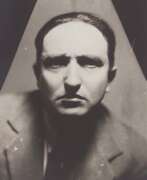

Fortunato Depero was an Italian futurist painter, designer, sculptor and poet. In 1913 Depero comes to Rome, where he meets the futurists Giacomo Balla and Umberto Boccioni.
In the early 1920s, Fortunato Depero tries his hand as an artist in commercial advertising, designs theatrical costumes, works for magazines and as a room decorator, and participates in many art exhibitions.
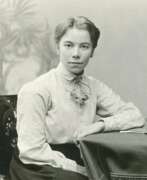

Elena Genrikhovna Guro (Russian: Еле́на Ге́нриховна Гуро́), born in 1877 in St. Petersburg, Russia, and passing in 1913, was a pioneering figure in the Russian Futurist movement. As a multifaceted artist, she delved into painting, writing, and poetry, marking her as a versatile and innovative force in the early 20th century Russian avant-garde. Guro's work is distinguished by its embrace of Futurism, a movement that sought to break away from traditional art forms and explore dynamic means of expression. Her contributions were not only limited to visual arts but also extended to literature, where she experimented with narrative forms and language, often incorporating nonsensical elements to challenge conventional aesthetics.
Guro's literary works, such as "The Little Camels of the Sky," demonstrate her experimental approach to language and form, embodying the Futurist fascination with the aesthetic possibilities of words. This approach is evident in her poetry and short stories, where she utilized single-word sentences and nonsense words to capture the essence of moments or convey a childlike perspective. Such techniques allowed her to explore the texture of language and its visual and auditory qualities, making her work resonate with the innovations of the Futurist and Dada movements.
Despite her early death at the age of 36, Guro's legacy continues to be celebrated for its contribution to the evolution of Russian modernism. Her work bridged the gap between the Symbolist movement and Futurism, contributing significantly to the dialogue around art and literature in her time. Her husband, Mikhail Matyushin, further propagated her artistic theories, ensuring that her innovative approach to color and form continued to influence Russian art and literature after her passing.
Elena Genrikhovna Guro remains an inspirational figure in the world of art and literature, embodying the spirit of innovation and exploration that defined the early 20th century avant-garde. Her works, which blend poetic language with vivid imagery, invite audiences to reconsider the boundaries between different art forms and the potential of language as an artistic medium.
For those intrigued by the rich tapestry of Russian Futurism and the unique voice of Elena Guro, signing up for updates on her works, sales, and auction events can deepen your appreciation and understanding of this pivotal artist's contributions. This subscription will ensure you stay informed about the latest insights and opportunities related to Elena Genrikhovna Guro's enduring legacy.
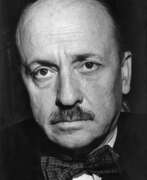

Filippo Tommaso Marinetti was an Italian writer, poet, founder of Futurism and one of the ideologues of Fascism. He founded a number of futurist magazines and the publishing house Poesia.
Filippo Tommaso Marinetti - author of the first futurist manifesto, one of the founders of aerial painting. He founded his own political party in 1918 to expand and translate the ideals of the futurist movement into the political struggle.
One of the founders of Italian Fascism, he worked closely with Mussolini. In his later work, he developed an updated version of futurism, the so-called Aeropoiesis, whose manifesto he published in 1931.
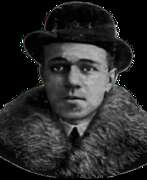

Pavel Dmitrievich Shirokov (1893–1963) (Russian: Павел Дмитриевич Широков) was a poet of Ego-Futurism in Russia in the 1910s. He was a close friend of Ivan Ignatyev, who published Shirokov's first book entitled "Rozy v Vine" (Roses in Wine).
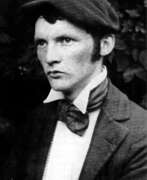

Heinrich Vogeler was a German artist and philosopher, a representative of the German Art Nouveau. A versatile and talented artist, he painted, watercolored, composed poems, designed, designed and decorated. Over time, his style of art changed over a wide range.
During World War I, from 1914 to 1917, Vogeler was on the Eastern Front as a volunteer and made sketches, which resulted in his pacifist sentiments.
In the mid-1920s he visited the Soviet Union several times and his impressions resulted in paintings in his own "complex style: "Karelia and Murmansk" (1926), "Building a New Life in the Soviet Republics of Central Asia" (1927), and "Baku" (1927). In 1931 Vogeler received an invitation to work in the USSR. The coming to power of the Nazis in Germany made it impossible for him to return home, and after Hitler's invasion Vogeler among many was deported to the Kazakh SSR, where he died.
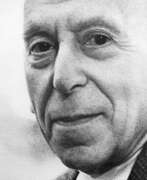

Léon Zak, birth name Lev Vasilyevich Zak (Russian: Лев Васильевич Зак), was a Russian poet, painter, graphic artist, stage designer and sculptor, theorist and ideologist of Futurism.
Leon Zak belonged to the Paris School. After years of figurative painting, his art moved increasingly towards abstraction. From 1950 he also turned to sacred art and created crucifixes, sculptures for church interiors and stained glass windows.
